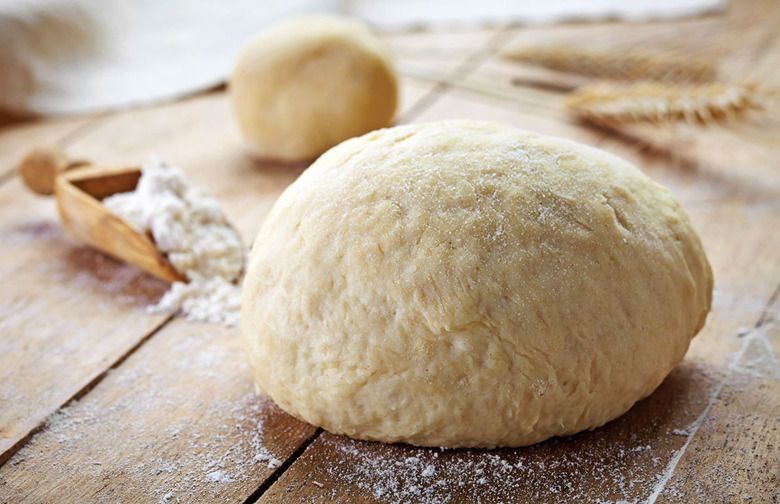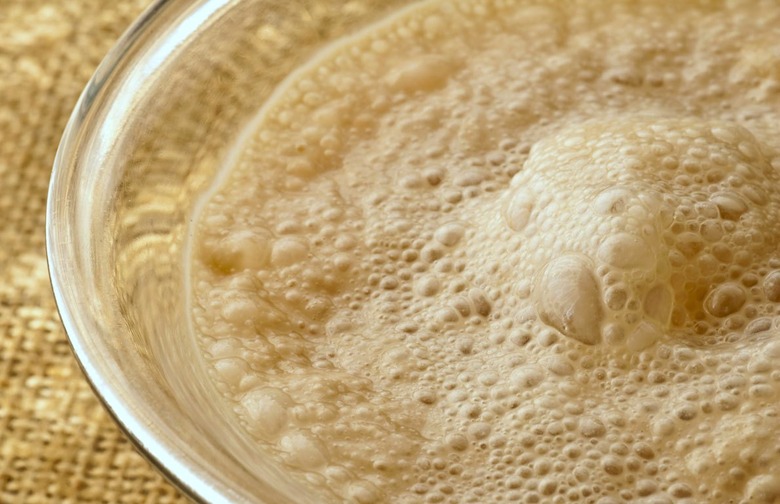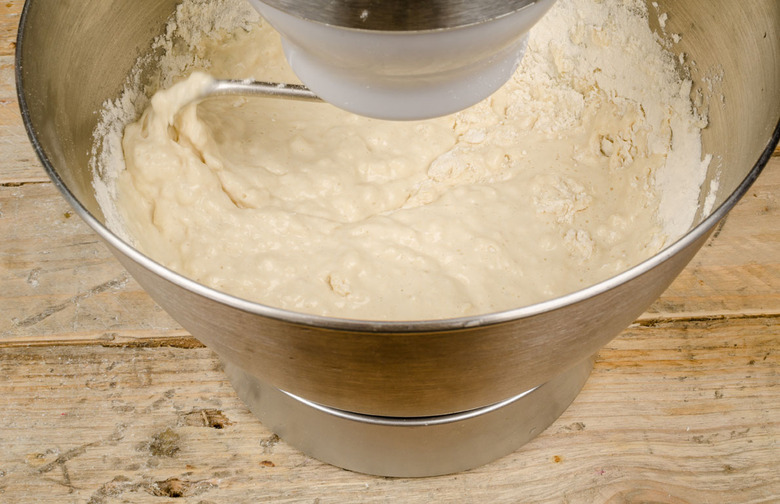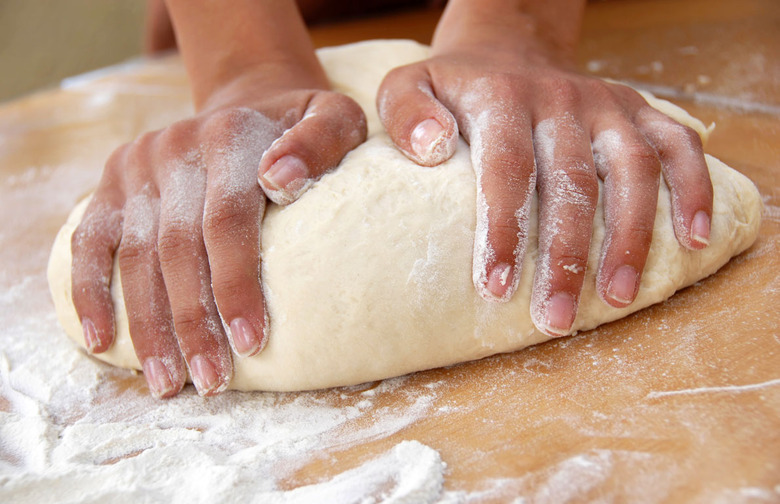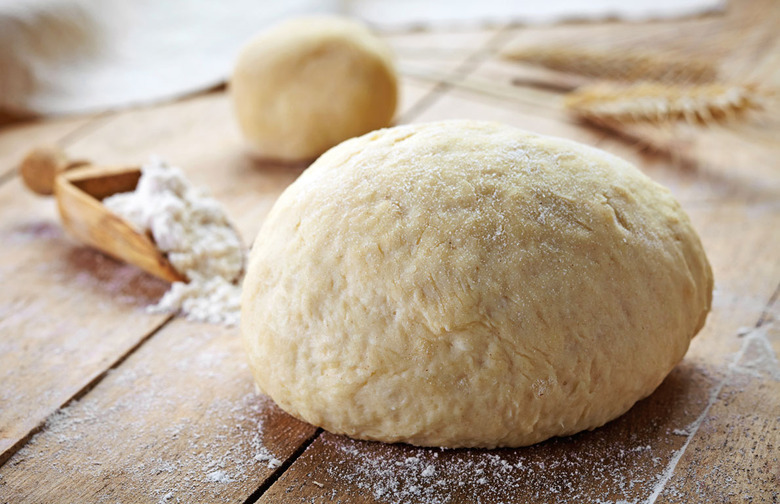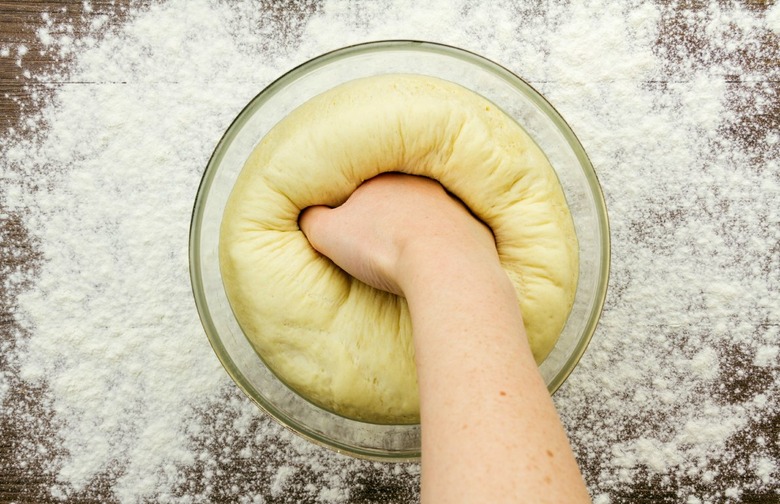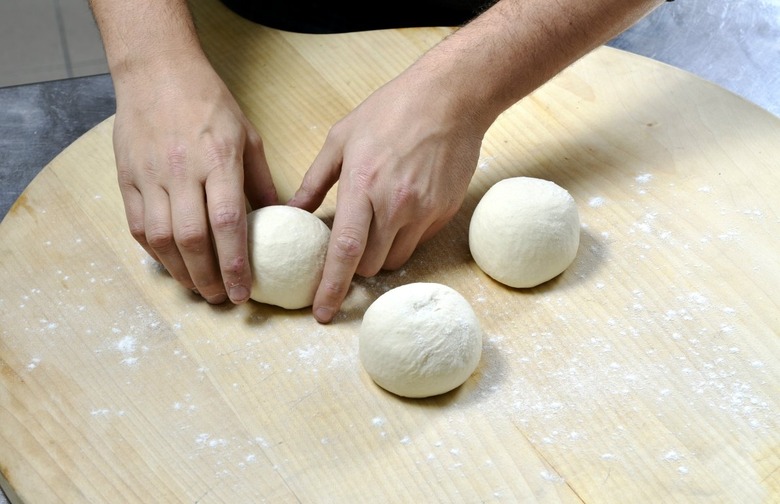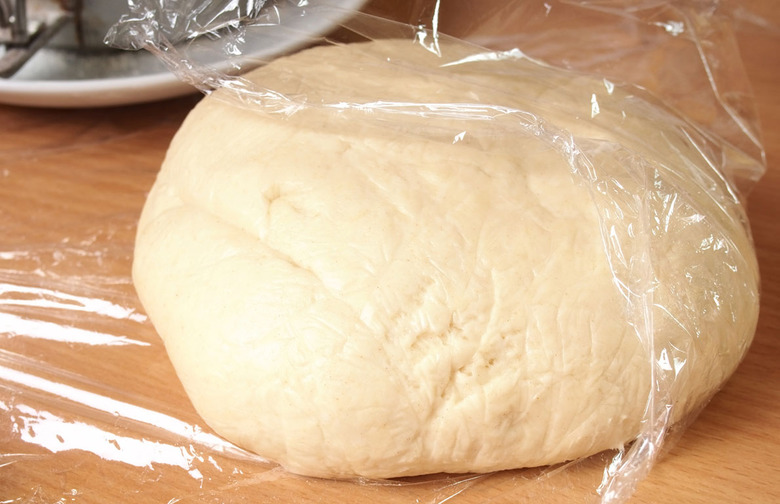How To Make Pizza Dough From Scratch — The Easy Way
Making fresh pizza dough is easy; it just requires a little advance planning.
Activate the Yeast
Whether you're using fresh or dried yeast, it must be active before you add it to the dough. Recipes that call for dried yeast will have you mix the yeast into a warm (but not hot) liquid before adding it to the dough, while recipes that call for fresh yeast will typically instruct you to mix it with a small amount of flour and water before adding it to the dough.
Mix the Dough
Once your yeast is active, add it to the other dough ingredients. If you have a stand mixer, you can combine your ingredients with a dough hook. If not, make a well in the center of your dry ingredients (like flour) and pour the wet ingredients (water and yeast) into the well before mixing by hand.
Knead the Dough
Once the ingredients are fully combined, the dough needs to be kneaded for anywhere from 5 to 15 minutes, depending on your recipe. You can do this in a stand mixer using a dough hook or by hand. Kneading helps develop the dough's natural gluten, which is an important part of achieving the correct texture in your dough.
Let the Dough Ferment
Whether you choose to put your dough into the refrigerator for 24 to 48 hours or simply leave it in a warm place to rise, it needs time to ferment. During this part of the dough-making process, the live yeast in the dough will feed on the carbohydrates in the flour and produce alcohol (which gives the dough flavor) and carbon dioxide gas bubbles (which help the dough rise, imparting a light, airy texture). The dough is generally done with this step when it has roughly doubled in size.
Punch Down the Dough
After your dough doubles, gently punch it down (literally) so that the gasses are released from the dough. Usually 2 to 3 gentle punches are enough to de-gas the dough.
Shape the Dough
Then, cut the dough into the desired number of pieces and shape them. In the case of pizza dough, simply shape the dough into a ball by gently flattening it on a lightly floured surface, making a very small indentation in the middle of the dough with your thumbs, and then turning the dough over and drawing the edges toward the indentation to form a tight, round sphere.
Proof the Dough
Cover any balls of dough that you are planning to use right away with plastic wrap and leave them in a warm place until they double in size. When the dough has doubled, it's ready to use.
